Abstract
The patterns of disease caused by five common viruses which infect the respiratory tract are described. The viruses were strains of rhinovirus types 2, 9, and 14, a strain of coronavirus type 229E and of respiratory syncytial virus. Volunteers were given nasal drops containing a low infectious dose of one of the viruses, quarantined from 2 days before to 5 days after inoculation, and examined daily by a clinician using a standard checklist of respiratory signs and symptoms. Only subjects who developed clinical illness accompanied by viral shedding and/or specific antibody production were analysed [n = 116]. The results confirm indication from earlier studies that the main difference between colds induced by different viruses is in duration of the incubation period. Patterns of symptom development were not substantially different with different viruses. Analyses of signs and symptoms in different categories, e.g. nasal symptoms v. coughing, justify treatment with different drugs either successively or simultaneously.
Full text
PDF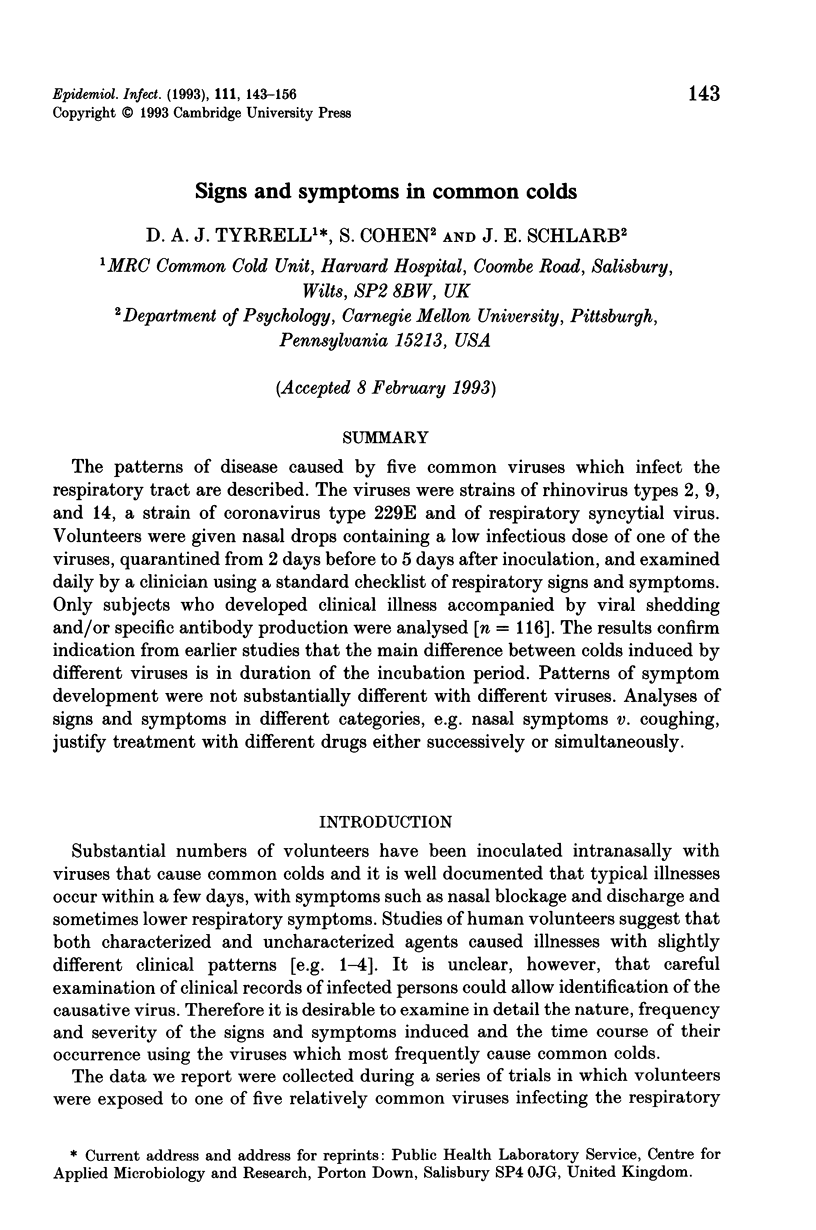
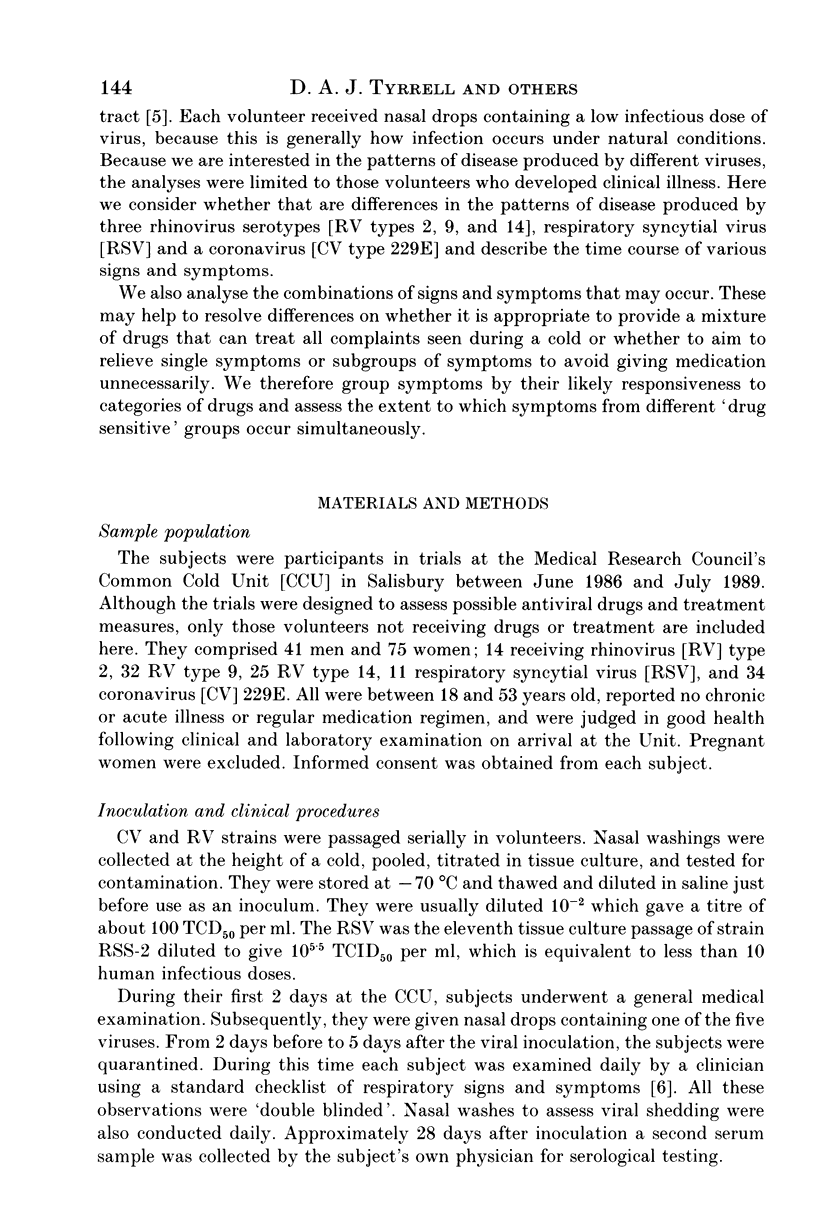
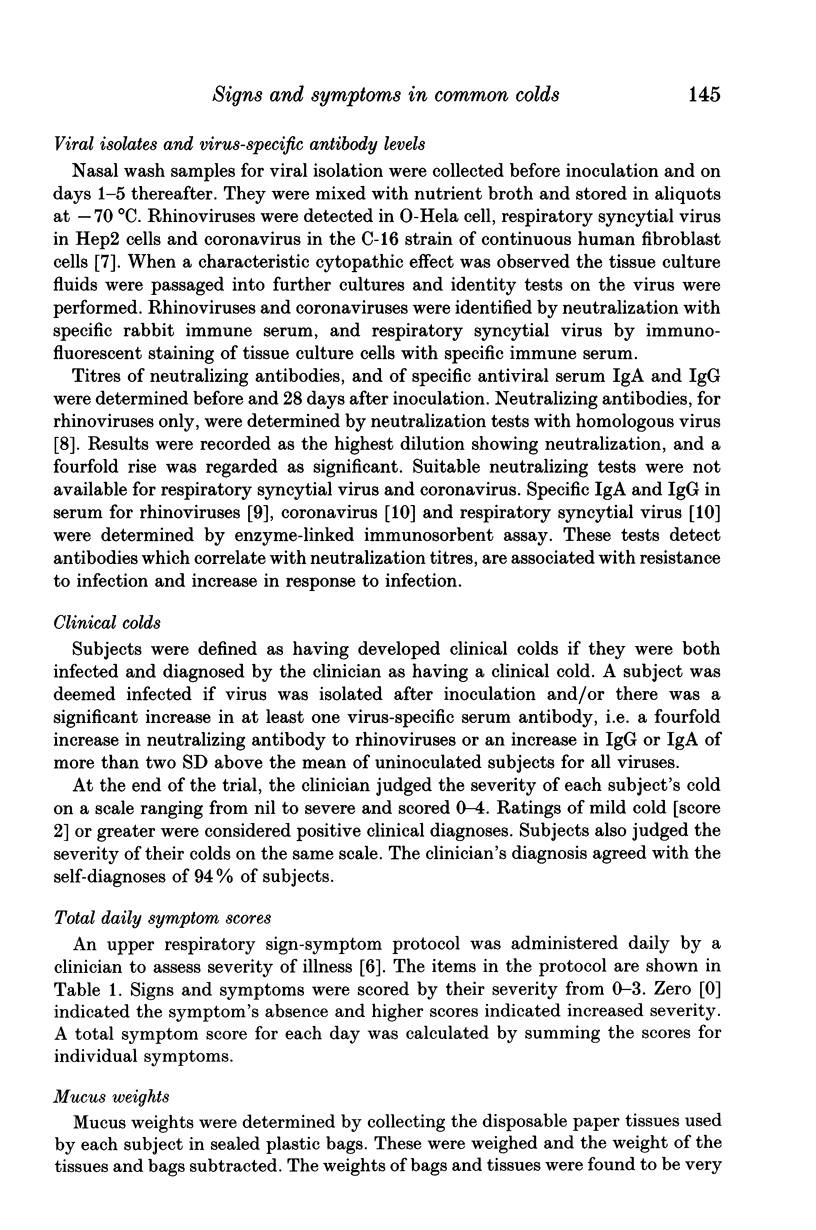

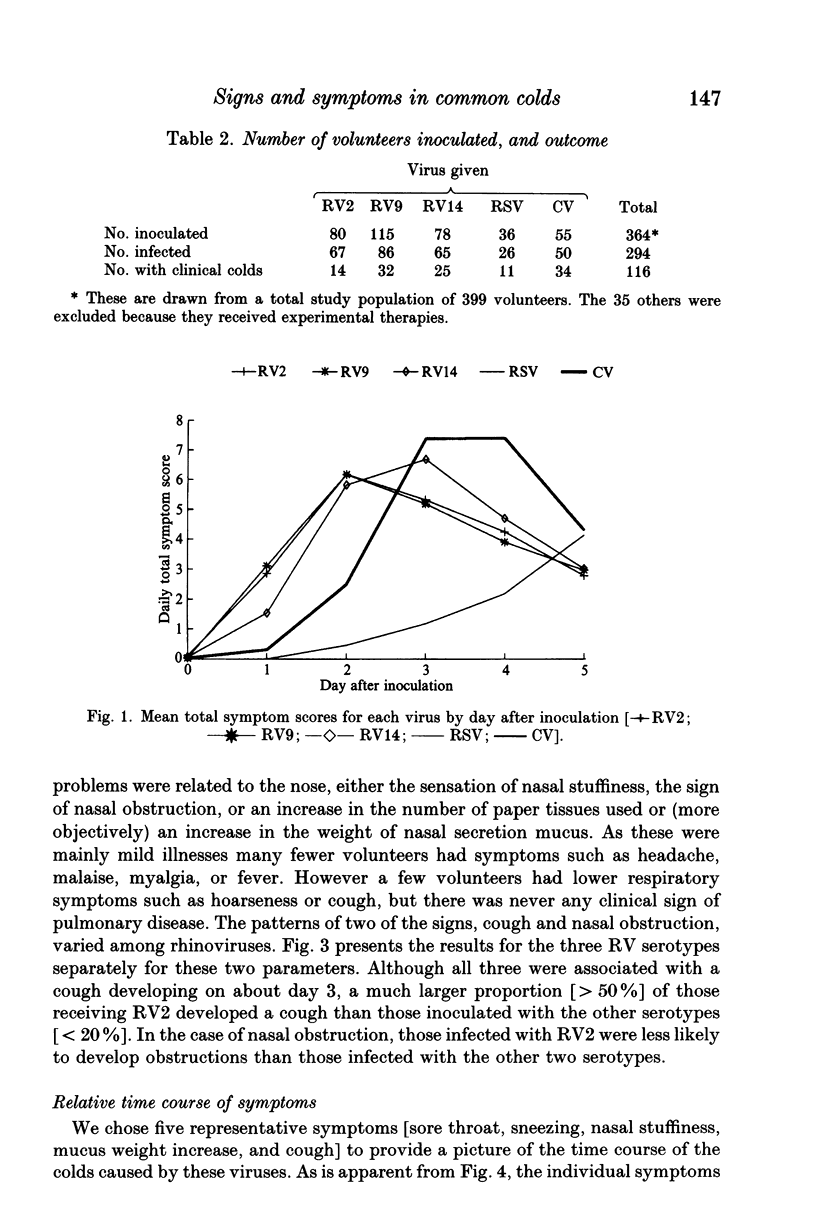
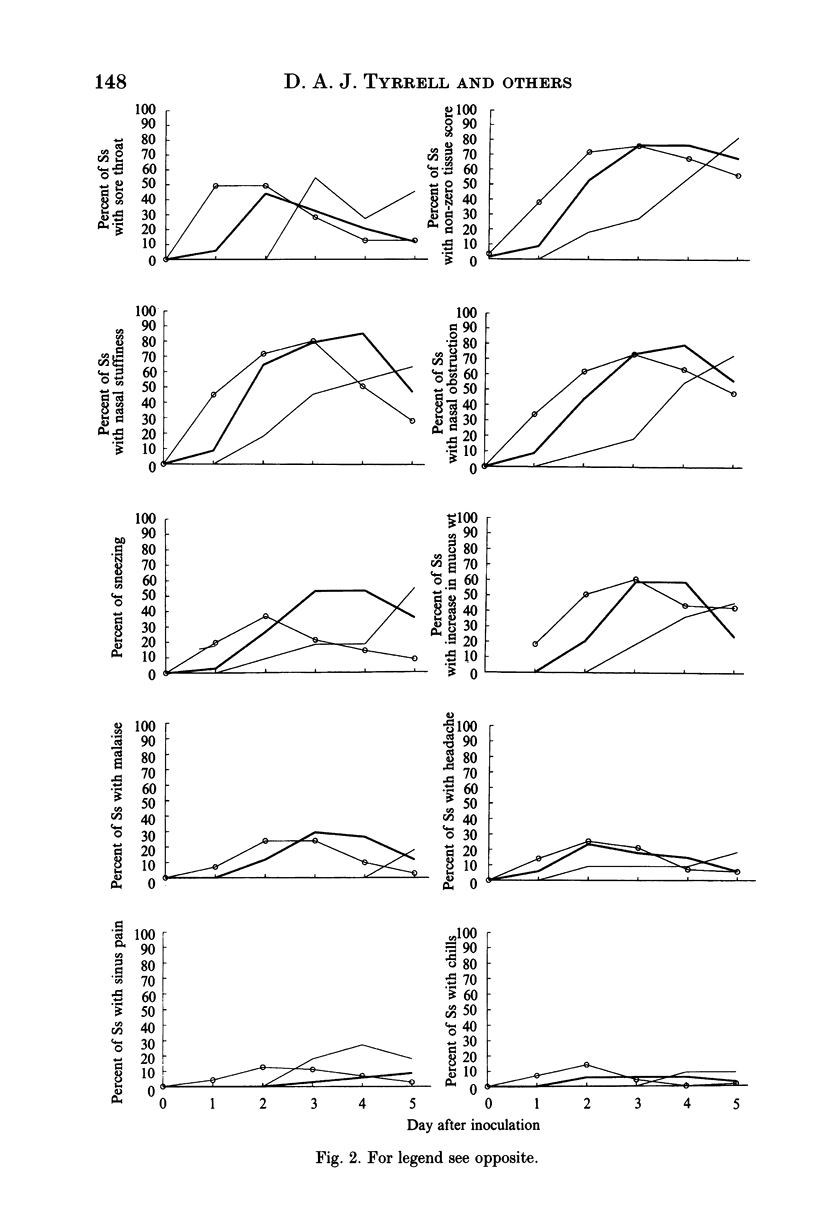
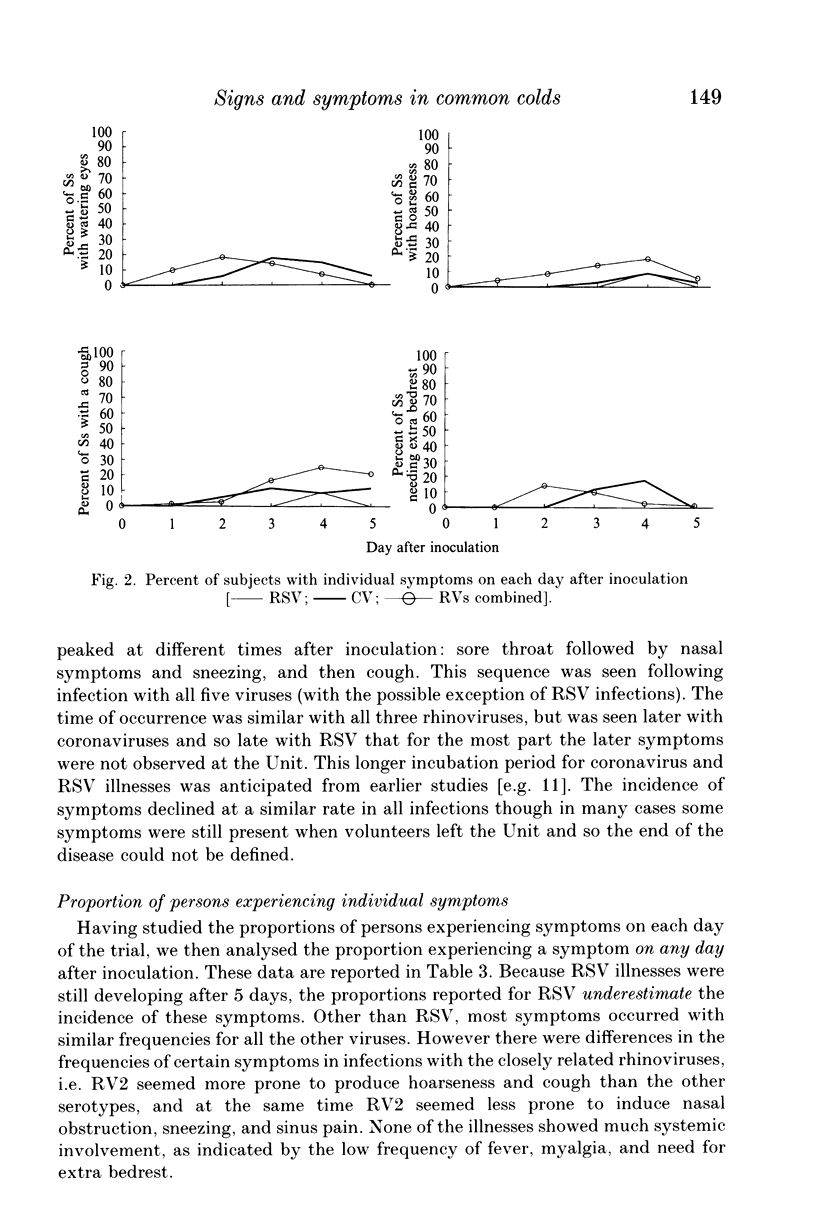

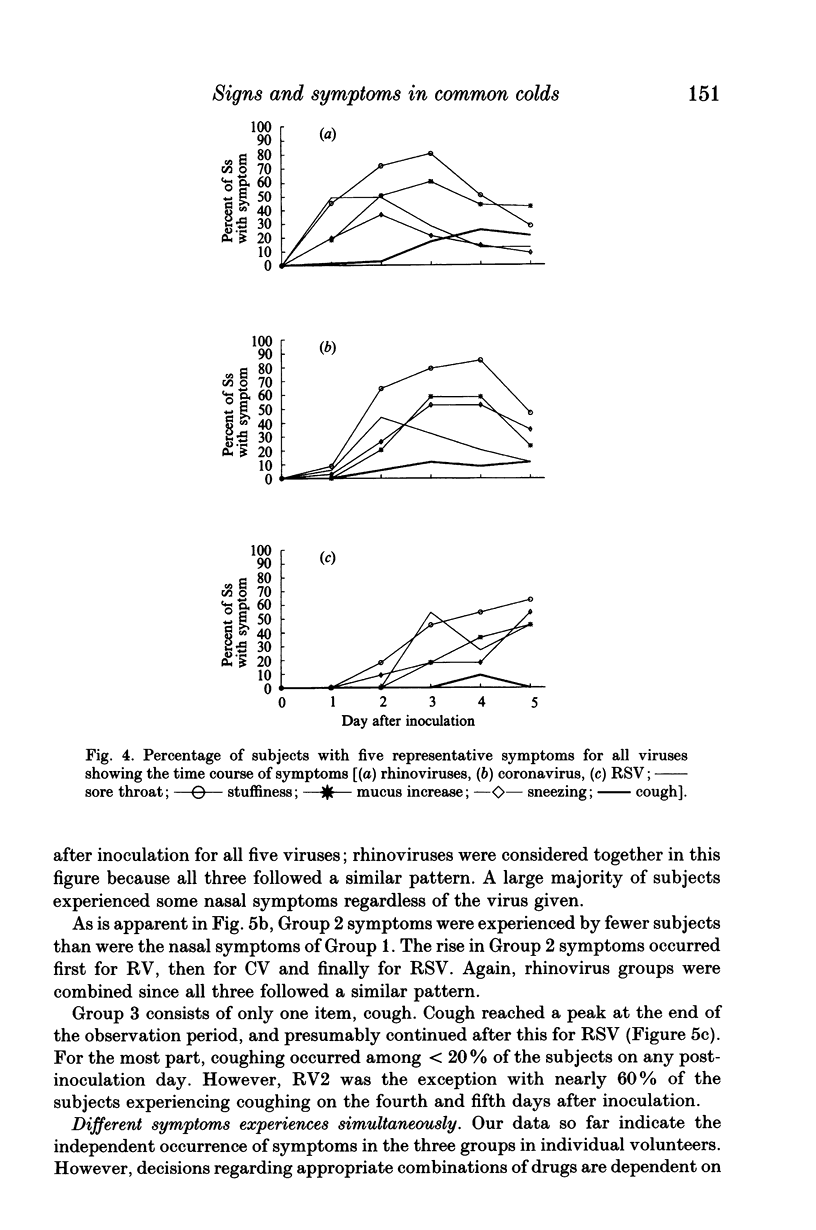
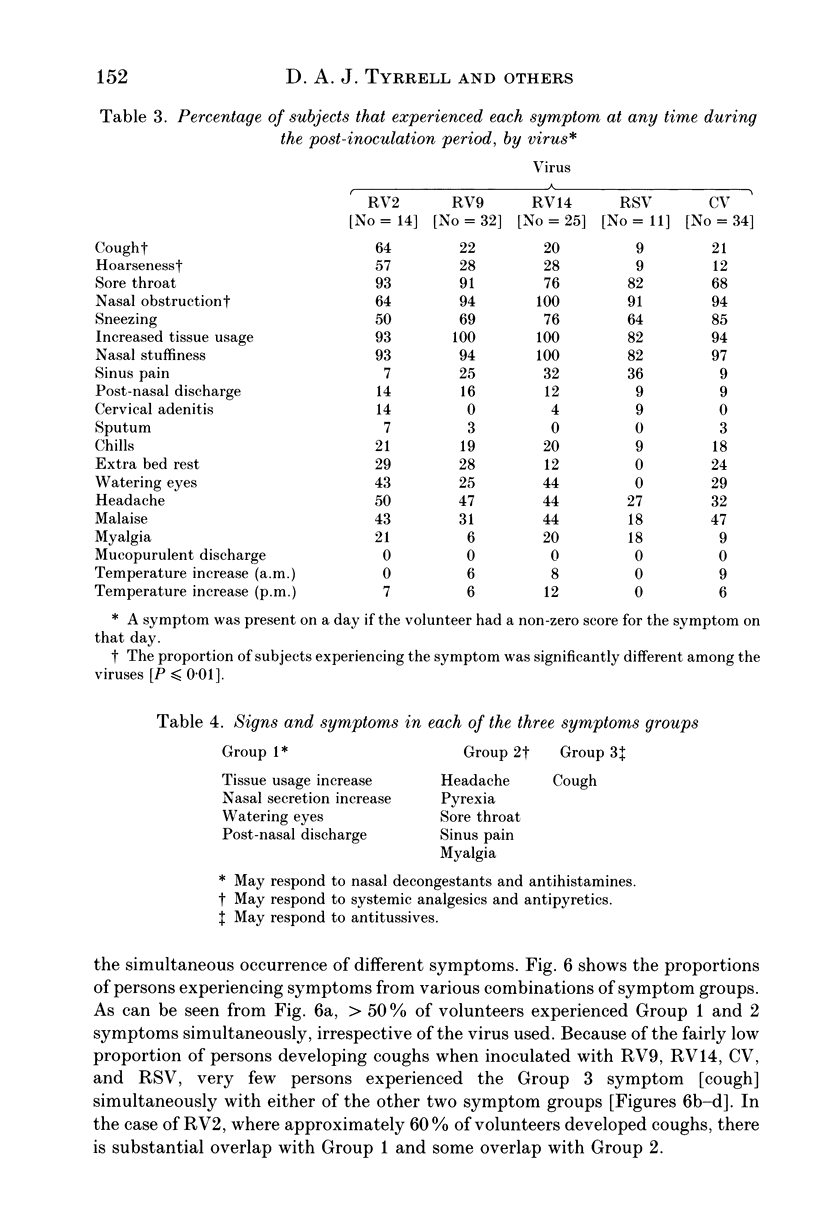
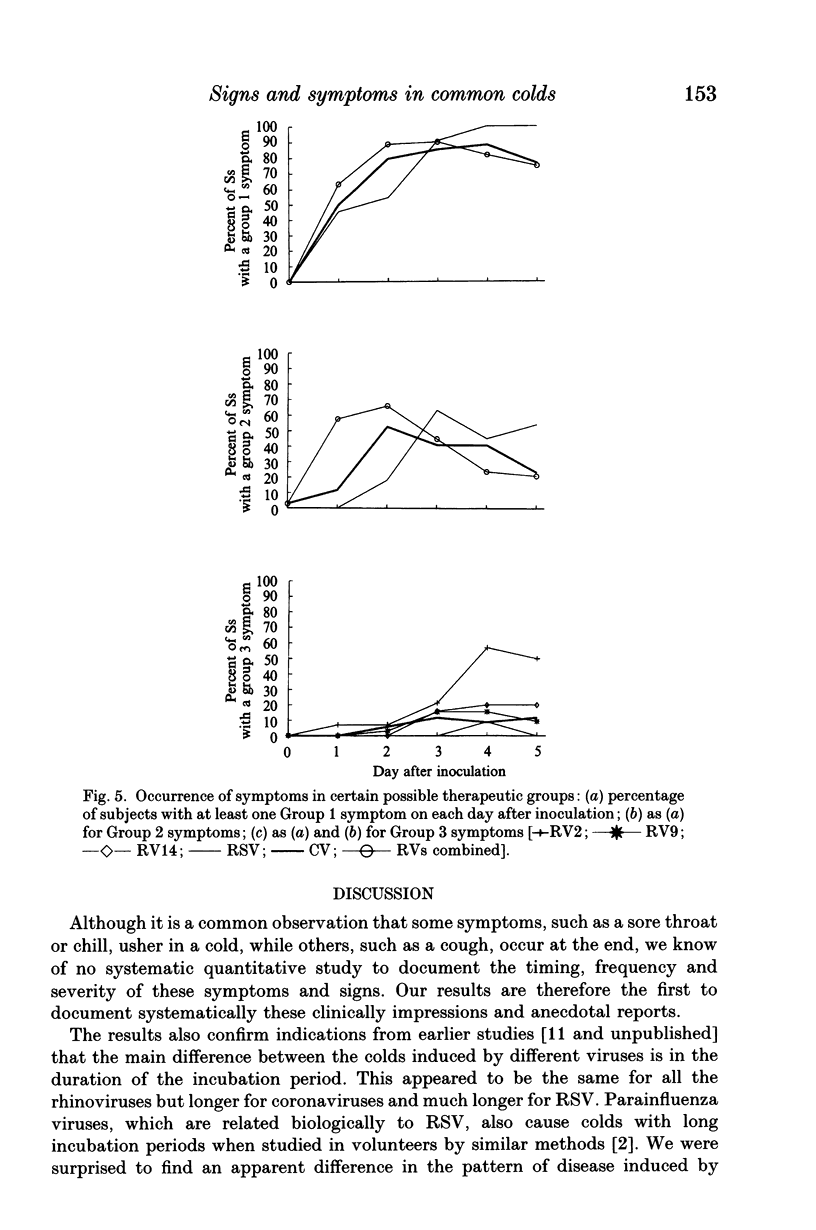
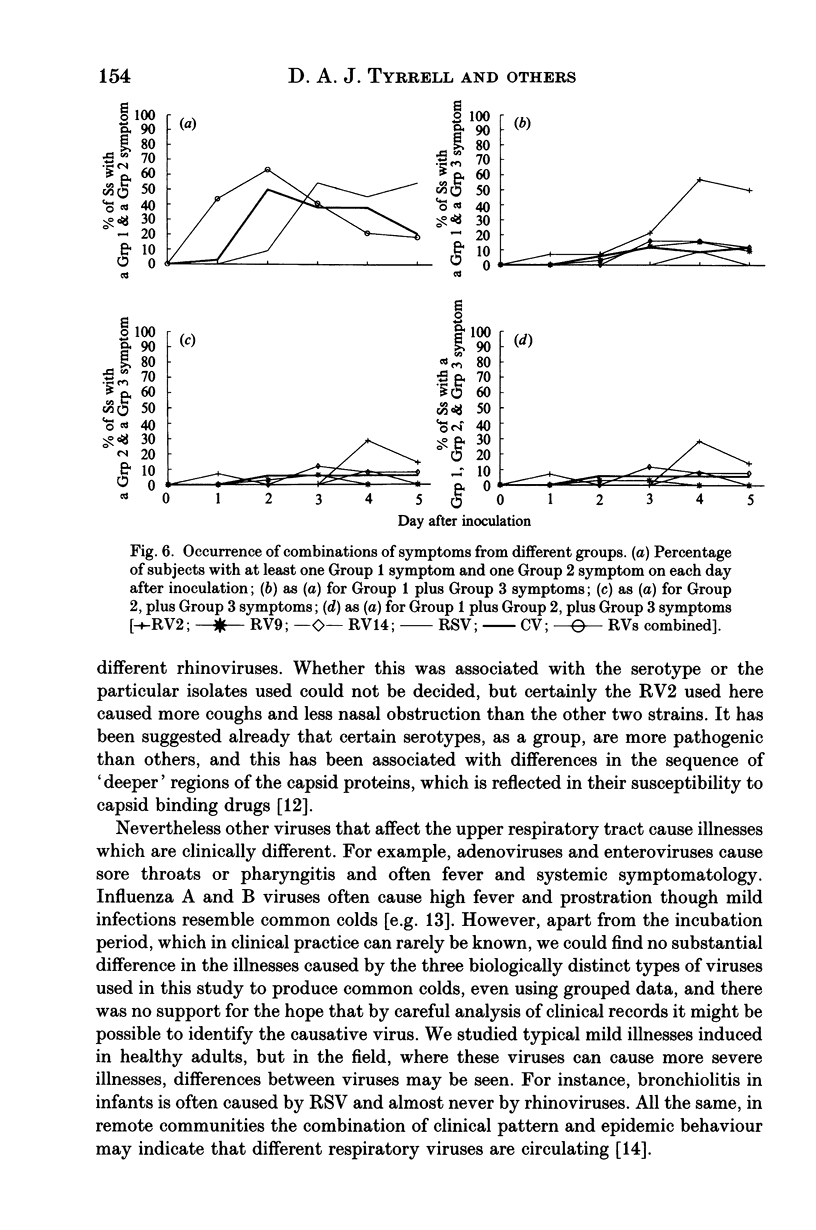
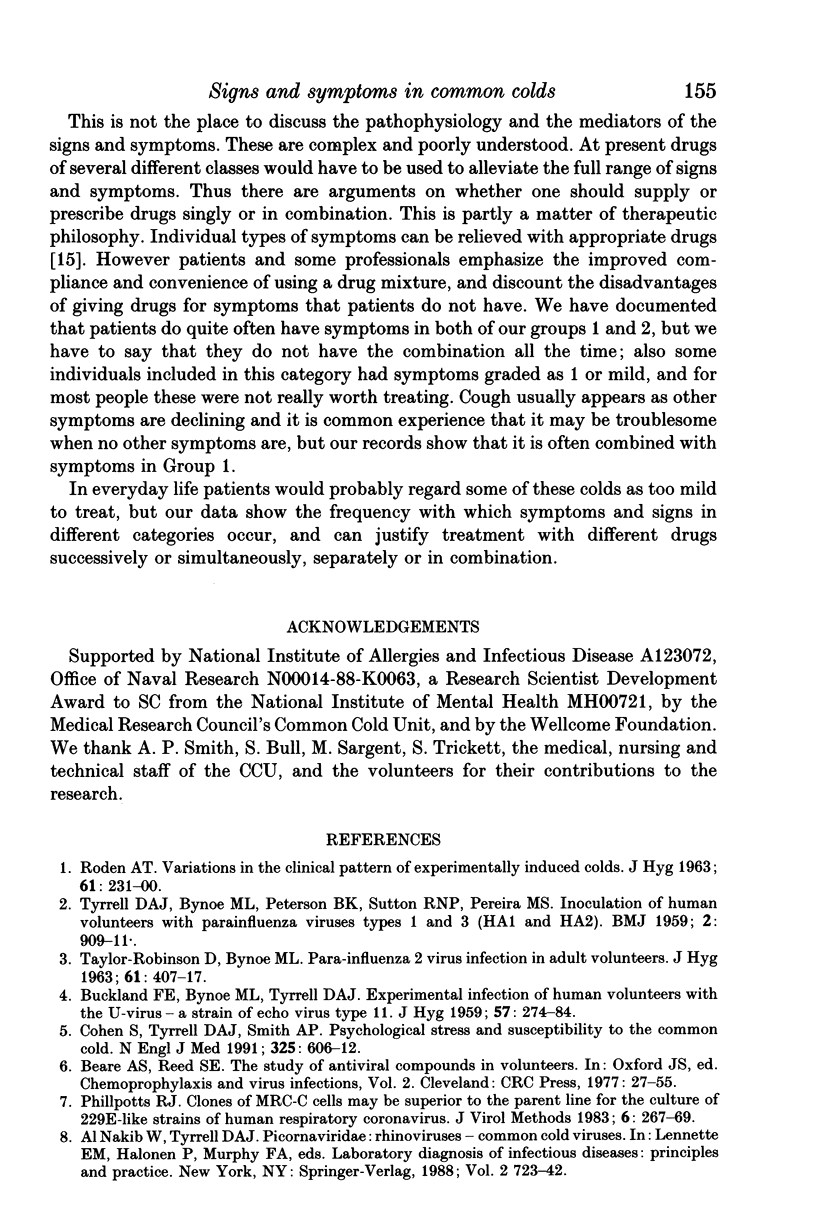
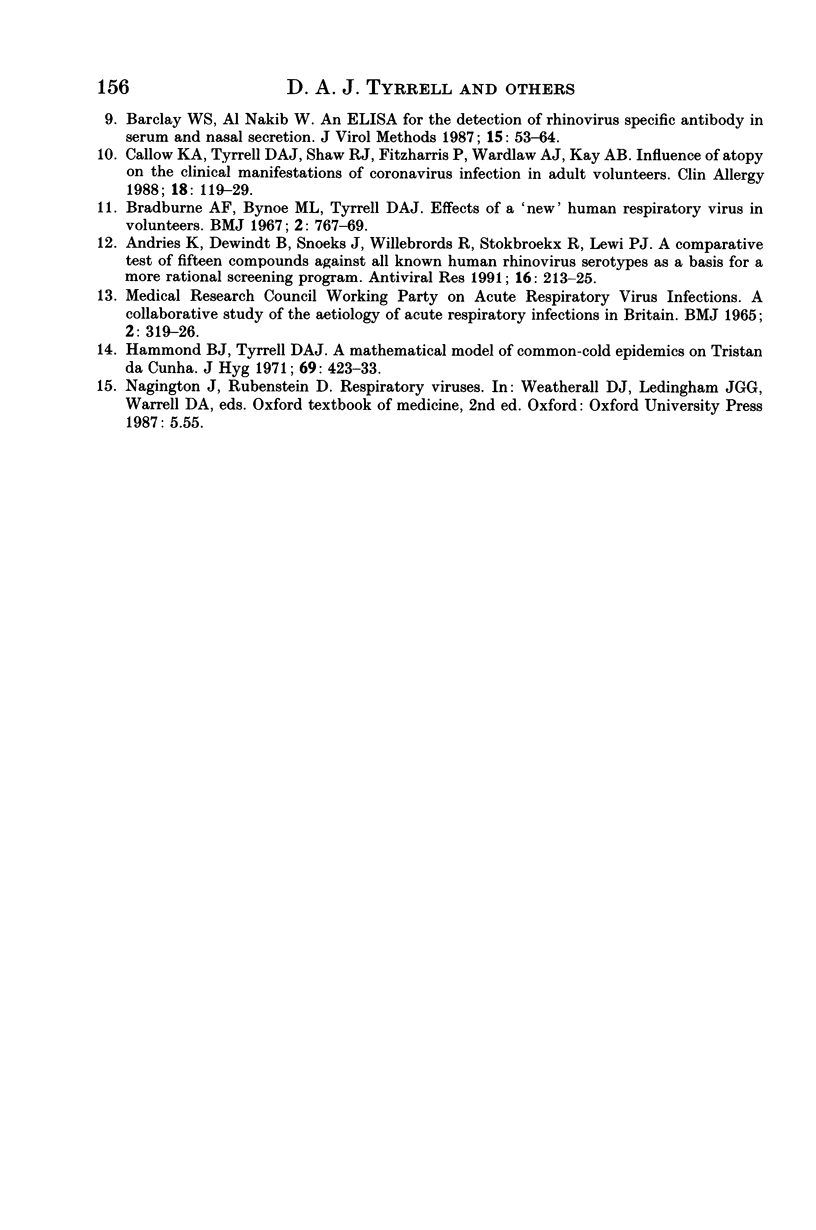
Selected References
These references are in PubMed. This may not be the complete list of references from this article.
- Andries K., Dewindt B., Snoeks J., Willebrords R., Stokbroekx R., Lewi P. J. A comparative test of fifteen compounds against all known human rhinovirus serotypes as a basis for a more rational screening program. Antiviral Res. 1991 Oct;16(3):213–225. doi: 10.1016/0166-3542(91)90001-8. [DOI] [PubMed] [Google Scholar]
- BUCKLAND F. E., BYNOE M. L., PHILIPSON L., TYRRELL D. A. Experimental infection of human volunteers with the U-virus-a strain of ECHO virus type 11. J Hyg (Lond) 1959 Sep;57:274–284. doi: 10.1017/s0022172400020131. [DOI] [PMC free article] [PubMed] [Google Scholar]
- Barclay W. S., Al-Nakib W. An ELISA for the detection of rhinovirus specific antibody in serum and nasal secretion. J Virol Methods. 1987 Jan;15(1):53–64. doi: 10.1016/0166-0934(87)90048-6. [DOI] [PMC free article] [PubMed] [Google Scholar]
- Bradburne A. F., Bynoe M. L., Tyrrell D. A. Effects of a "new" human respiratory virus in volunteers. Br Med J. 1967 Sep 23;3(5568):767–769. doi: 10.1136/bmj.3.5568.767. [DOI] [PMC free article] [PubMed] [Google Scholar]
- Callow K. A., Tyrrell D. A., Shaw R. J., Fitzharris P., Wardlaw A. J., Kay A. B. Influence of atopy on the clinical manifestations of coronavirus infection in adult volunteers. Clin Allergy. 1988 Mar;18(2):119–129. doi: 10.1111/j.1365-2222.1988.tb02851.x. [DOI] [PMC free article] [PubMed] [Google Scholar]
- Cohen S., Tyrrell D. A., Smith A. P. Psychological stress and susceptibility to the common cold. N Engl J Med. 1991 Aug 29;325(9):606–612. doi: 10.1056/NEJM199108293250903. [DOI] [PubMed] [Google Scholar]
- Hammond B. J., Tyrrell D. A. A mathematical model of common-cold epidemics on Tristan da Cunha. J Hyg (Lond) 1971 Sep;69(3):423–433. doi: 10.1017/s0022172400021677. [DOI] [PMC free article] [PubMed] [Google Scholar]
- Phillpotts R. J. Clones of MRC-C cells may be superior to the parent line for the culture of 229E-like strains of human respiratory coronavirus. J Virol Methods. 1983 May;6(5):267–269. doi: 10.1016/0166-0934(83)90041-1. [DOI] [PMC free article] [PubMed] [Google Scholar]
- RODEN A. T. Variations in the clinical pattern of experimentally induced colds. J Hyg (Lond) 1963 Jun;61:231–246. doi: 10.1017/s0022172400020945. [DOI] [PMC free article] [PubMed] [Google Scholar]
- TAYLOR-ROBINSON D., BYNOE M. L. PARA-INFLUENZA 2 VIRUS INFECTIONS IN ADULT VOLUNTEERS. J Hyg (Lond) 1963 Dec;61:407–417. doi: 10.1017/s0022172400021021. [DOI] [PMC free article] [PubMed] [Google Scholar]
- TYRRELL D. A., BYNOE M. L., PETERSEN K. B., SUTTON R. N., PEREIRA M. S. Inoculation of human volunteers with parainfluenza viruses types 1 and 3 (HA 2 and HA 1). Br Med J. 1959 Nov 7;2(5157):909–911. doi: 10.1136/bmj.2.5157.909. [DOI] [PMC free article] [PubMed] [Google Scholar]


